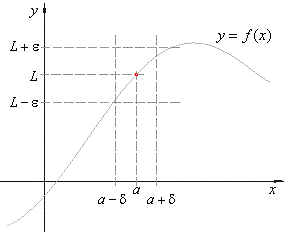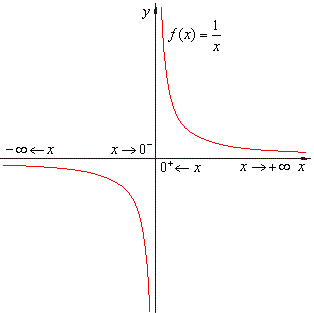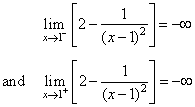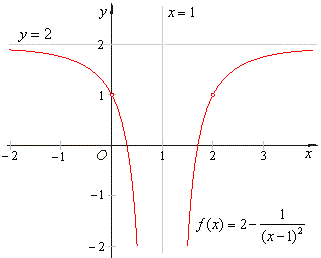|
Infinite limits |
|
The
limit of a function examples |
|
Vertical, horizontal
and slant (or oblique) asymptotes |
|
|
|
|
|
|
|
| The
definition of the limit of a function |
| The
limit of a function is a real number L
that f
(x)
approaches as x
approaches a given real number a,
written |
 |
| if
for any e
> 0 there is a d
(e)
> 0 such that
|
f(x)
-
L | < e
whenever | x
-
a | < d (e). |
| The
definition says, no matter how small a positive number e
we take, we can find a positive number d
such that, for an arbitrary chosen value of x
from |
|
the interval a
-
d
< x
< a +
d, |
|
the corresponding function's values lie inside |
|
the interval
L
-
e
< f
(x)
< L +
e, |
|
as shows the right figure. |
| That
is, the function's values can be made arbitrarily
close to the number L
by choosing x
sufficiently
close to
a, but not equal to
a. |
|
 |
|
| Therefore,
the number d,
that measures the distance between a point x
from the point a
on the x-axis,
depends
on the number e
that measures the distance between the point f
(x)
from the point L
on the y-axis. |
| Example: Given |
 |
|
|
whenever |
 |
|
| A
limit is used to examine the behavior of a function near a point
but not at the point. The function need not even be defined at
the point. |
|
| Infinite limits |
| We
write |
 |
| if
f (x) can
be made arbitrarily large by choosing x
sufficiently close
but not equal to a. |
| We
write |
 |
| if
f (x) can
be made arbitrarily large negative by choosing x
sufficiently close
but not equal to a. |
|
| The
limit of a function examples |
| Example: Evaluate
the following limits; |
 |
 |
| Solution:
a) As x
tends to minus infinity f
(x)
gets closer and closer to 0. |
| As x
tends to plus infinity f
(x)
gets closer and
closer to 0. Therefore, |
 |
| b) As x
tends to 0 from the left f(x)
gets larger in negative sense. |
|
 |
|
| As
x
tends to 0 from the right f
(x)
gets larger in positive sense. Therefore, |
 |
|
| Vertical, horizontal
and slant (or oblique) asymptotes |
| If
a point (x, y) moves
along a curve f
(x)
and then at least one of its coordinates tends to infinity,
while the distance between the point and a line tends to zero
then, the line is called the asymptote
of the curve. |
|
| Vertical
asymptote |
| If
there exists a number a
such that |
 |
| then
the line x
= a is the vertical
asymptote. |
|
| Horizontal
asymptote |
| If
there exists a number c
such that |
 |
| then
the line y
= c is the horizontal
asymptote. |
|
| Slant
or oblique asymptote |
| If
there exist limits |
 |
| then,
a line y = mx
+ c is the slant
asymptote of the function f
(x). |
|
| Example: Find
the vertical and the horizontal |
| asymptote
of the function |
 |
| Solution:
Since, |
 |
| then x
= 1 is the vertical asymptote. |
|
 |
|
| Since, |
 |
|
|
| then y
= 2 is the horizontal asymptote. |
|
| Example: Calculate
asymptotes and sketch the graph of the function |
 |
|
| Solution:
By
equating the numerator with zero and solving for
x
we
find the x-intercepts, |
| x2
-
x -
2 = (x + 1)(x -
2) = 0, |
| x1
= -1
and
x2
= 2. |
| We
calculate f
(0)
to find the y-intercept, |
| f
(0)
= 2/3. |
| By
equating the denominator with zero and solving for
x
we find the vertical
asymptote, |
| x
= 3. |
| Let
calculate following limits |
 |
| to
find the slant asymptote y
= mx + c. |
|
 |
|
 |
 |
| Therefore,
the line y
= x + 2
is the slant asymptote of the given function. |